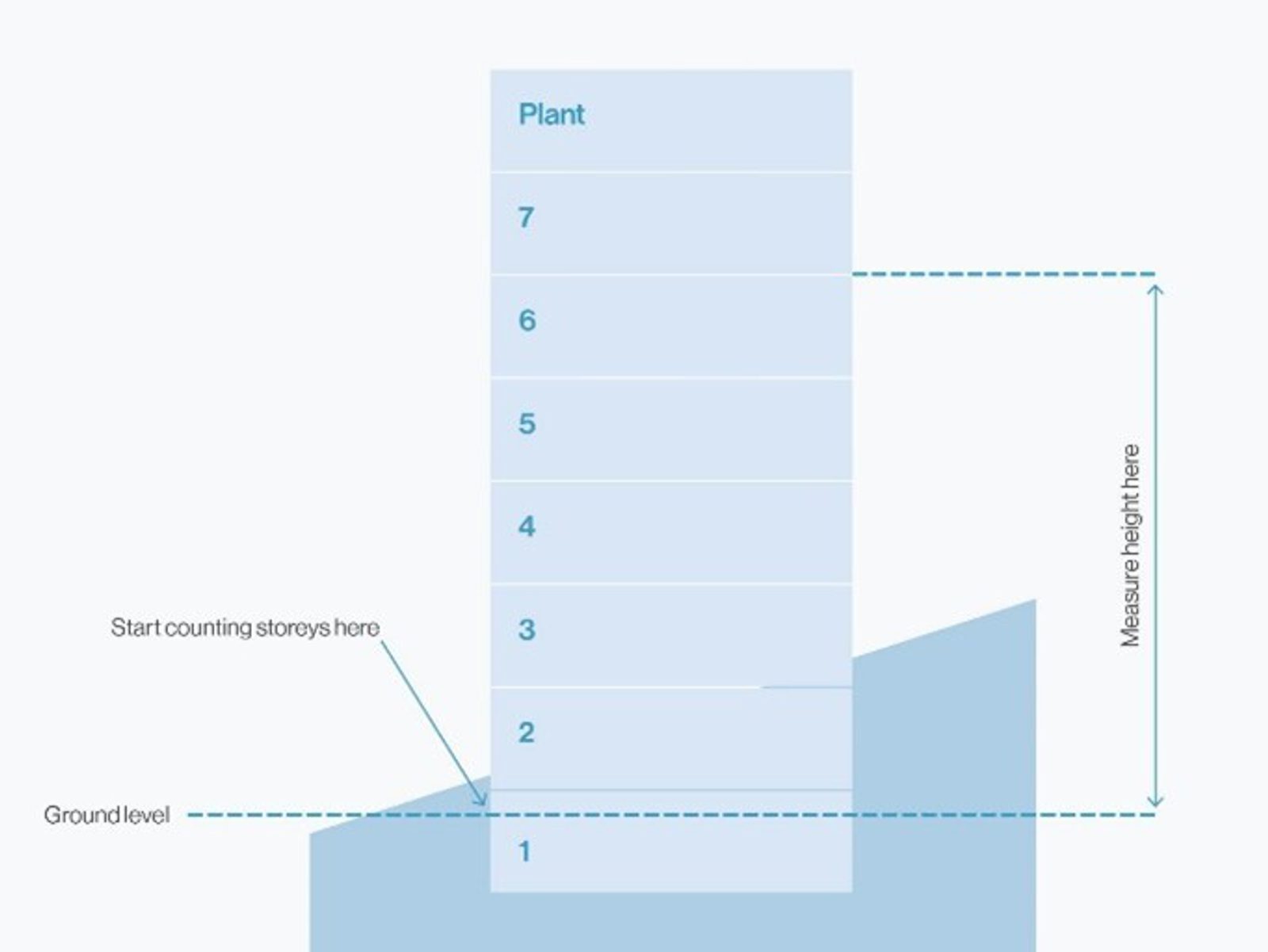Practice News
Can you identify the Higher-Risk Buildings in your estate?
by AHR
Do you know how to identify a Higher-Risk Building (HRB)? With several key criteria to consider, including the buildings use, legal definition and its height and number of storeys, it might not be as simple as you think!
We’ve put together a simple guide to identifying a HRB to help you understand more about your estate, and if any of your buildings are considered higher-risk. This means they are subject to an enhanced regulatory regime during design and construction work, and use.
How does the Building Safety Act define a HRB?
As per the definition set out in Section 65 of the Building Safety Act 2022, a HRB must have the following:
- At least two residential units. A residential unit is a dwelling or any other unit of living accommodation, including flats, HMOs (Houses in Multiple Occupation), shared accommodation etc.)
- Be at least 18m in height or a minimum of seven storeys: This measurement is taken from the lowest part of the external ground level (abutting the building) to the floor level of the top storey of the building (not including roof tops or plant rooms). See the diagram below.
Examples of HRBs
From the definition above, it would be easy to assume that most HRBs are simply residential high-rise tower blocks. However, here’s some examples of less obvious HRBs:
- A building which contains a shopping centre but also has two residential units and meets the height or storeys threshold is defined a higher-risk building
- Buildings such as boarding accommodation at schools and university accommodation that meet the height or storeys threshold are considered higher-risk(1)
Which buildings are excluded?
Some parts of a building should not be included when considering whether or not your building should be classed as a HRB. These include:
- Residential buildings comprising entirely as a care home, hospital, secure residential institution, hotel or military barracks
- Any living accommodation provided by the Ministry of Defence for military personnel
In summary
The three key criteria to consider when assessing if your building is classed as a HRB are:
1. Usage: What is your building used for? Does it meet any of the included or excluded categories of building.
2. Legal building definition: How does your building definition in Regulations apply to your building structure? You can find more information about this on the Government website.
3. Height and storeys: How do the methods for measuring height and storeys in the Regulations apply to your buildings? Does your building meet either the 18m or seven-storey height threshold when measured using these methods? (1)
How can we support you with the Building Safety Act?
We prepared for the Building Safety Act coming into place for over a year before it did, taking part in consultation on the proposed bill and tracking its progress ever since so we can be on hand to support you with the industry-wide competency regime will impact your projects which concern high-rise and HRBs.
The Act does the following:
- Protects leaseholders by eradicating the idea that leaseholders should fund repairs to historical safety defects
- Gives a voice to residents in high-rise building so they have more say in how their home is kept safe and the ability to raise any concerns
- Creates clear lines of responsibility during the design, construction, and completion of all buildings
- Provides a clear, proportionate framework for the design construction and management of safer homes
Our ‘Higher-Risks Building Group’ was specially formed following the announcement of the new act to lead new best practice in the design, detailing, specification and management of higher-risk building projects.
The group comprises a minimum of two specialists from each of our offices – bringing a unique set of competencies that collectively cover every aspect of our scope.
Additional legislation
You can find out more about the legislation regarding HRBs by reading the following guidance:
- The Building (Higher-Risk Buildings Procedures) (England) Regulations 2023
- The Higher-Risk Buildings (Description and Supplementary Provisions) Regulations 2023
Learn more about The Building Safety Act here.
If you need any support with your high-rise or higher-risk buildings, get in touch with us today.
References
Share on
Related Articles

Project News
Exciting plans to enhance a high-rise residential block in the heart of Huddersfield are shared with the public
To improve fire safety measures and provide enhanced living spaces, the 11-storey building, which dates back to 1968, will undergo a complete transformation.
Date: 22 Aug 23
by AHR

Practice News
Supporting local students with work experience placements in Huddersfield
To enable students to gain an insight into how all parts of our practice works, we offer a varied week which allows them to work within our numerous departments and see what our colleagues get up to.
Date: 24 Jul 24
by AHR
Thought Leadership
Supporting the town where our story began
For over 180 years, our architecture and building consultancy services have supported the development and conservation of Huddersfield Town Centre.
Date: 10 Nov 23



